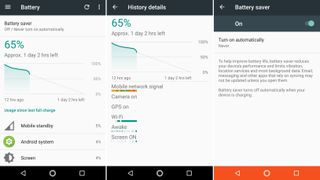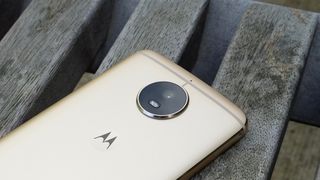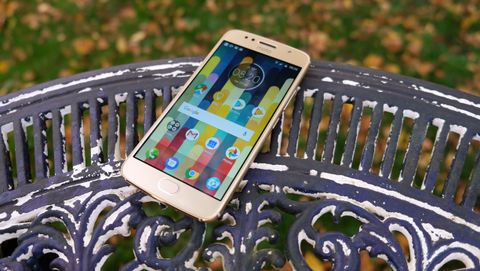Why you can trust TechRadar
Battery life
- Excellent battery life will carry many through two days
- 3000mAh battery charges quickly
Interestingly, the Moto G5S shares the same 3000mAh battery as its larger brother - which makes it larger than the similarly spec'd Moto G5.
The result is notably improved battery life compared to the original phone. We found that the G5S was frequently able to get through two days of light to moderate usage on a single charge. On one particularly noteworthy day, we noted that the phone lost just 25% in 12 hours.
Naturally, putting the phone to work with lots of media content, camera usage, and general screen-on time will knock that down a great deal. But you’ll be able to get through to bed time with plenty to spare, which is all most of us want at this point.

Besides, the regular TechRadar battery test of a 90-minute 720p looping video with the display brightness cranked up to max resulted in just 16% power loss.
That’s identical to the Moto G5S Plus - which is a little disappointing given that phone’s larger display - but it’s way better than the original Moto G5 on 22%.
On the rare occasion that you do find yourself caught a little short, Motorola’s TurboPower charging standard is here to help you out. It can provide 5 hours of battery life with just a quick 15 minute charge.
We’re used to fast-charging standards by now, but Motorola’s is impressive for being able to continue charging quickly even as it nears full capacity.
While the fastest charging spell always lies in the first 60% with smartphone batteries, we observed the Moto G5S battery moving from 64% to 94% in just 30 minutes.
Camera
- 16MP camera capable of taking genuinely strong shots
- Underwhelming in lesser lighting
The Moto G5S doesn’t quite get the same level of camera enhancement as the Moto G5S Plus does, with no dual-lens system on hand to bolster the depth of field effect.
However, it still represents an improvement over the Moto G5. We’re looking at a 16MP camera with an f/2.0 aperture, phase detection autofocus, and an LED flash.

It’s a very accomplished camera for a phone that’s right on the threshold between budget and mid-range. We managed to capture some genuinely impressive shots that felt like they could have been taken by a much more expensive phone.
The level of detail, clarity, and colour balance in well-lit scenarios was well ahead of most budget phones.
It does seem to struggle with metering though, as we noted a number of overly bright shots. There’s an auto HDR mode that should help balance this out, but it didn’t seem to kick in reliably for us. Force it through manually, though, and you can get some decent results.
Low light shots are a lot less impressive, with plenty of noise and the odd autofocus mishap.

The shooting experience itself is very pleasant thanks to some strong software. Motorola’s own camera UI is snappy enough, and we particularly like the ability to adjust the exposure of your image simply by dragging on the focus reticle. It helps counter those over-bright shots too.
Video recording is decidedly inferior to the Moto G5S Plus, which can manage 4K at 30fps and 1080p 60fps. The G5S can only manage 1080p at 30fps.
The selfie cam isn’t as good either, dropping to 5MP (like the G5). It does still benefit from its own LED flash though, which is far from a common component even in higher end phones.
Camera samples






Current page: Battery life and camera
Prev Page What's it like to use? Next Page Verdict and competition